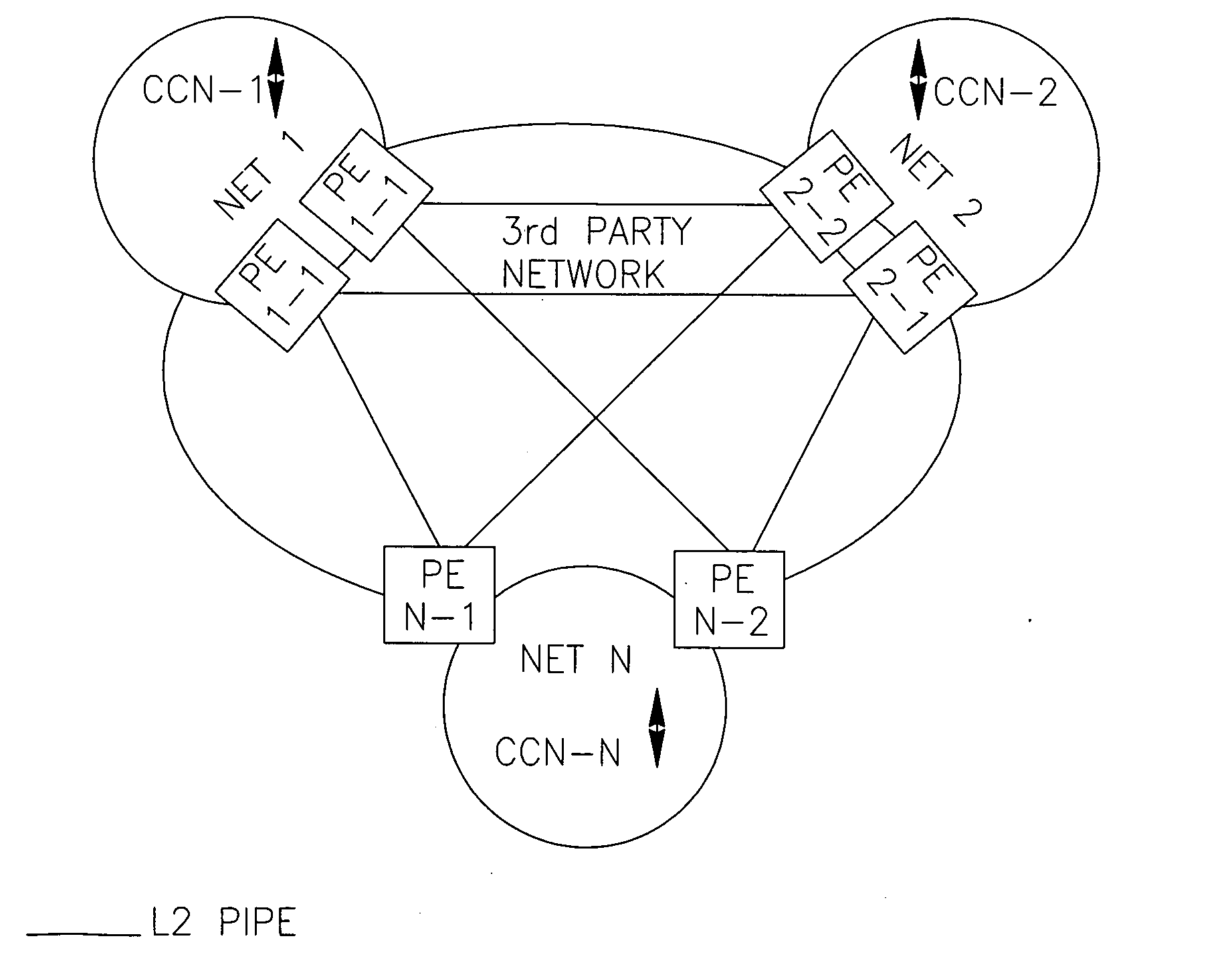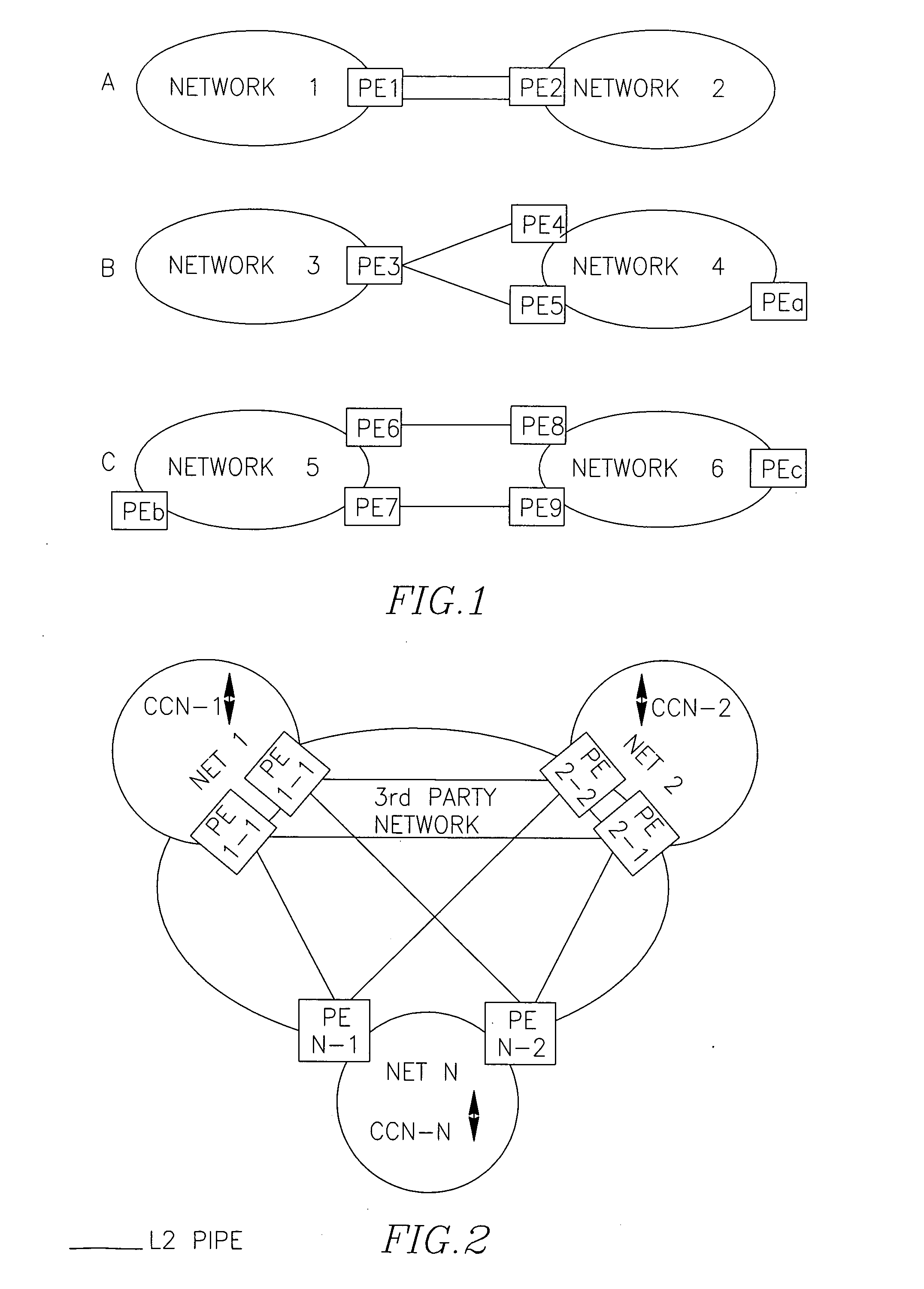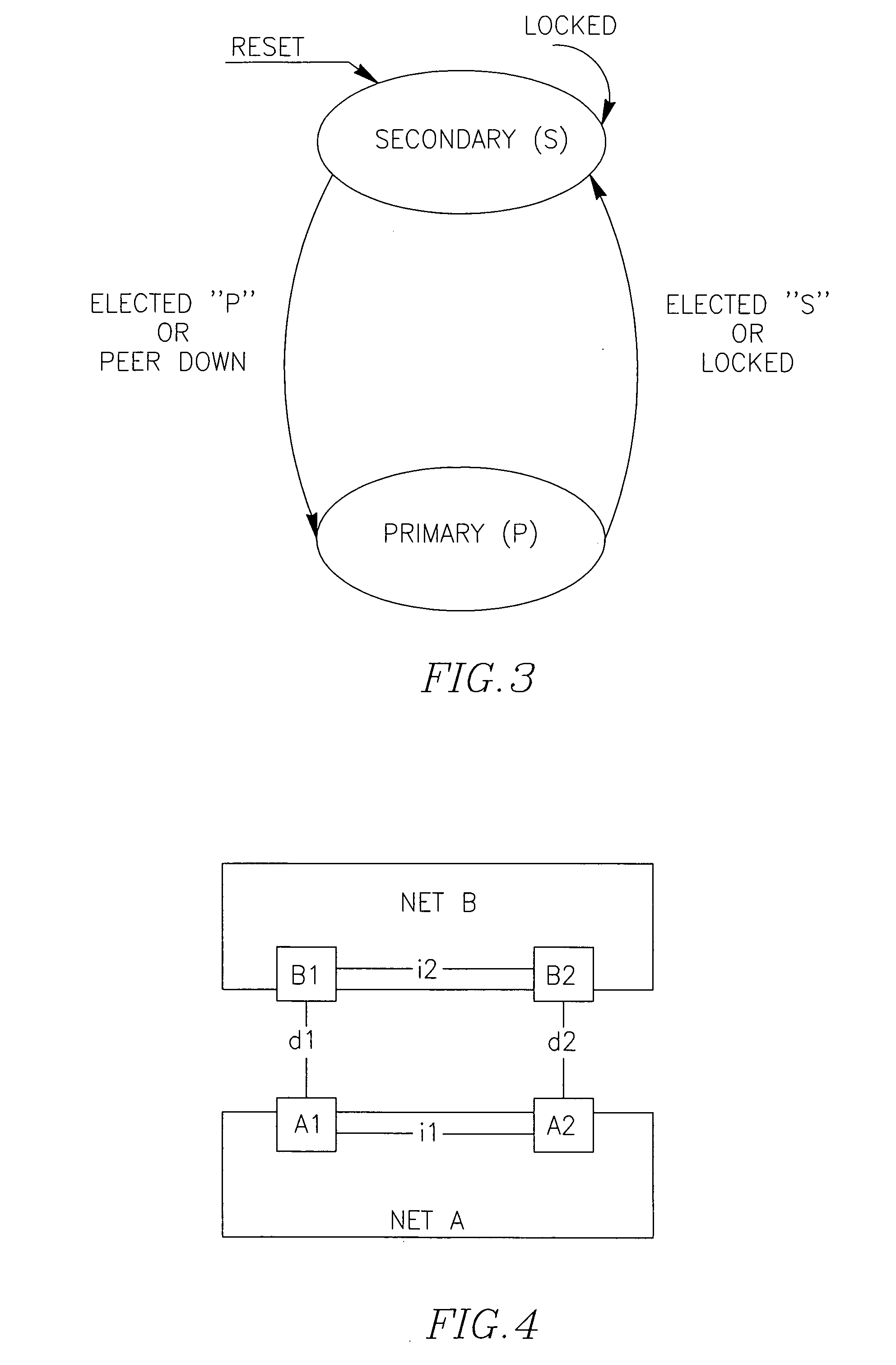Technique for dual homing interconnection between communication networks
a communication network and interconnection technology, applied in the field of loopfree protected dual homed connectivity, can solve the problems of unable to maintain xstp (along with its built-in ccn), and not supporting fully redundant dual homing. the effect of extensive mac flushing
- Summary
- Abstract
- Description
- Claims
- Application Information
AI Technical Summary
Benefits of technology
Problems solved by technology
Method used
Image
Examples
Embodiment Construction
[0126]FIG. 1 has been referred to in the background description.
[0127]FIG. 2 has been referred to in the Summary.
[0128]FIG. 3 illustrates a state machine diagram of the basic rule of the loop protocol, namely the rule of Primary versus Secondary node / gateway (GW) in an intra-network node pair.
[0129]Each GW is associated with a role, either Primary or Secondary. The role defines the GW's L2 forwarding behavior. At any moment, there should be one Primary GW, while the other GW (if alive) would be Secondary.
[0130]The GWs use signaling to elect the Primary GW. This signaling comes in the form of periodic “Hello” packets describing configuration and status information of each sender GW. Typically, the election is based on priority that is assigned to each GW, wherein the GW with the higher priority becomes the Primary. In the case that GWs have same priority, a GW identifier (abbrev. ID) such as unique networking address can be used as a tiebreaker in selecting the Primary GW.
[0131]Initi...
PUM
 Login to View More
Login to View More Abstract
Description
Claims
Application Information
 Login to View More
Login to View More - R&D
- Intellectual Property
- Life Sciences
- Materials
- Tech Scout
- Unparalleled Data Quality
- Higher Quality Content
- 60% Fewer Hallucinations
Browse by: Latest US Patents, China's latest patents, Technical Efficacy Thesaurus, Application Domain, Technology Topic, Popular Technical Reports.
© 2025 PatSnap. All rights reserved.Legal|Privacy policy|Modern Slavery Act Transparency Statement|Sitemap|About US| Contact US: help@patsnap.com



